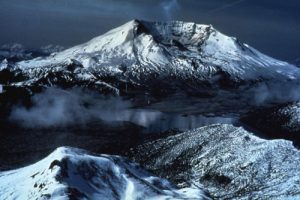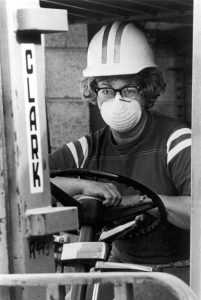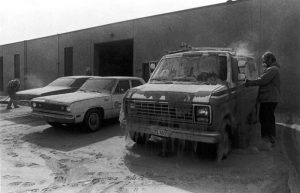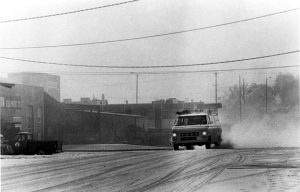Telecommunications History Group Resources
Response to Disasters
The 1980 Mount St. Helens Eruption - Response to Disasters
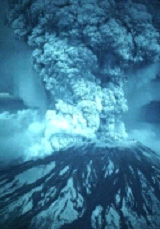 At 8:32 Sunday morning, May 18, 1980, Mount St. Helens erupted, devastating over 200 square miles of forest and spewing ash over eastern Washington and beyond. Fifty-seven lives were lost in the blast. It destroyed 27 bridges, nearly 200 homes, more than 185 miles of highways and roads and 15 miles of railways. Ash spread across U.S. in 3 days and circled the Earth in 15 days.
At 8:32 Sunday morning, May 18, 1980, Mount St. Helens erupted, devastating over 200 square miles of forest and spewing ash over eastern Washington and beyond. Fifty-seven lives were lost in the blast. It destroyed 27 bridges, nearly 200 homes, more than 185 miles of highways and roads and 15 miles of railways. Ash spread across U.S. in 3 days and circled the Earth in 15 days.
Pacific Northwest Bell (PNB) crews were immediately dispatched to set up emergency communications facilities in the affected area. Toll calling volumes quickly multiplied to three times their norm. Directory assistance operators at Yakima, Washington answered over 26,000 calls in a 24-hour period. Some operators in nearby towns were unable to leave work for home due to restricted travel. To make matters worse, ventilation systems and air conditioning were cut back to avoid pulling in the falling ash.
As mud and logs along the Toutle River near Longview threatened to give way, employees sandbagged entrances to central offices in case of sudden flooding. In other offices, workers taped up windows and doors against the ash storm. Many vehicles were disabled by the ash and driving conditions became more and more hazardous. Telephone facilities continued to operate at full capacity to handle hundreds of thousands of calls.
President Carter arrived on May 21 to survey the damage and declared Washington a disaster area. PNB employees, in addition to added call volumes and nearly impossible transportation conditions, were faced with the pressures of a presidential visit. They then set up an extensive communications system in Vancouver for the Federal Emergency Management Administration (FEMA).
Both President Carter and Washington Governor Dixie Lee Ray applauded PNB for its fast action and quality service provided in the midst of disaster.
For more information about Mount St. Helens, visit the Mount St. Helens National Volcanic Monument.
Additional Photos
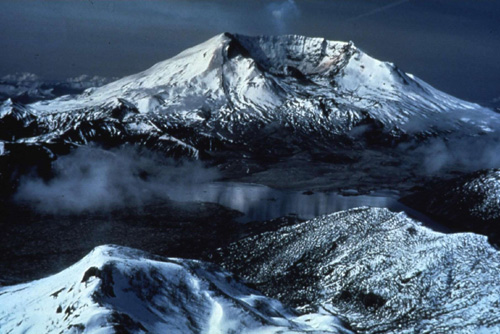 Layers of powdery volcanic ash made diving conditions hazardous and most non-essential driving was prohibited. (THG file photo - photographer Herb Hackenburg).
Layers of powdery volcanic ash made diving conditions hazardous and most non-essential driving was prohibited. (THG file photo - photographer Herb Hackenburg).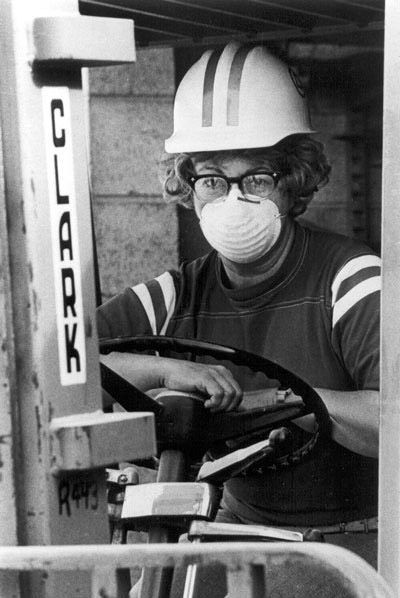 Yakima, WA employees had their hands full, maintaining service and coping with ash fallout. (THG file photo - photographer Herb Hackenburg).
Yakima, WA employees had their hands full, maintaining service and coping with ash fallout. (THG file photo - photographer Herb Hackenburg).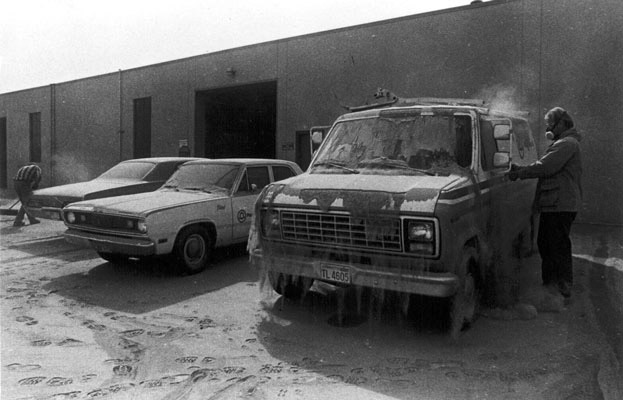 Telephone employees donned face masks and continued ding their jobs following the eruption. (THG file photo - photographer Herb Hackenburg).
Telephone employees donned face masks and continued ding their jobs following the eruption. (THG file photo - photographer Herb Hackenburg).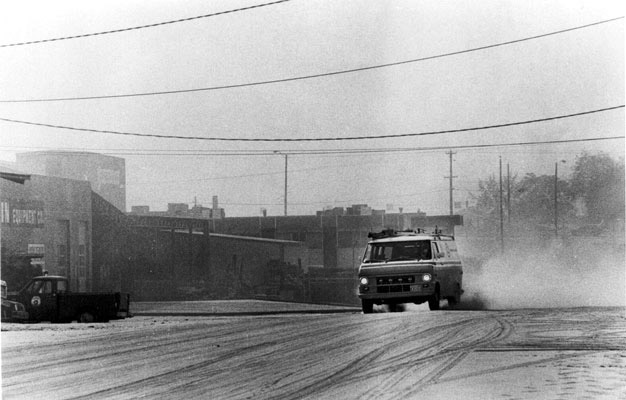 Aerial view of Mount St. Helens from the north looking over Mount Margaret (courtesy of USDA Forest Service, Mount St. Helens National Volcanic Monument. Photograph by the US Geological Survey).
Aerial view of Mount St. Helens from the north looking over Mount Margaret (courtesy of USDA Forest Service, Mount St. Helens National Volcanic Monument. Photograph by the US Geological Survey).

